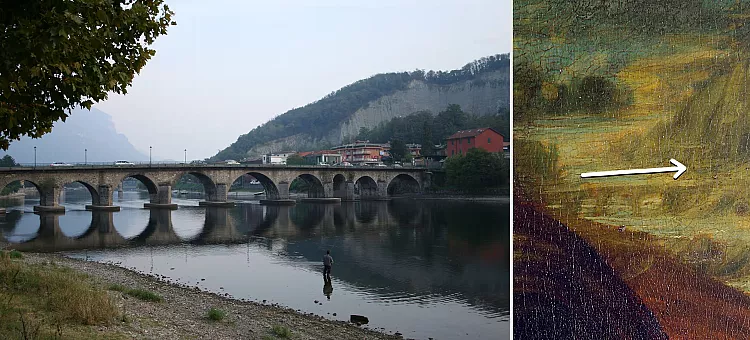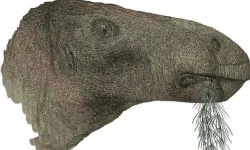Some art historians suggest that the landscape is imaginary and idealized, while others claim that there are various connections to specific places in Italy
The mystery of the highly controversial landscape behind Leonardo da Vinci's Mona Lisa may finally be solved.
While some art historians argue that the landscape is fictitious and idealized, others claim that there are various connections to specific locations in Italy.
According to the British Guardian newspaper, a geologist and Renaissance art historian Ann Pizzorusso believes she has finally solved the mystery behind one of the world's most famous paintings. 
Pizzorusso has combined her two areas of expertise to suggest that Leonardo painted many recognizable features of Lecco on the shores of Lake Como in northern Italy.
Pizzorusso matched Leonardo's bridge, mountain range and lake with the 14th-century Azzone Visconti bridge in Lecco, the southwestern Alps overlooking the area and Lake Garlate, which Leonardo is known to have visited 500 years ago.
"I'm very excited about this, I really feel that this is a gold strike," Pizzorusso said, adding that the similarities were undeniable.
In 2011, another theory claimed that a bridge and road in the Mona Lisa belonged to Bobbio, a small town in northern Italy. Another claim in 2023 suggested that Leonardo had painted a bridge in the province of Arezzo.
But focusing on the bridge is not enough, Pizzorusso said: "The arched bridge was present all over Italy and Europe and most of them were very similar. It is not possible to determine the exact location from the bridge alone. Everyone talks about the bridge but no one talks about the geology," Pizzorusso said.
The rocks in Lecco are limestone and Leonardo depicted them in gray-white, Pizzorusso said, adding that unlike Lecco, neither Bobbio nor Arezzo has a lake.
Pizzorusso, whose analysis of the vegetation and geology of the landscape around the central figures revived the debate, said: "The botany in the Louvre version is perfect, showing plants that could grow in a damp, dark cave. But the plants in the London version are wrong. Some of them do not exist in nature," Pizzorusso said.
Michael Daley, director of ArtWatch UK, commented on Pizzorusso's findings: "It's particularly important that he recognizes something in Leonardo, the most scientific artist ever, because he has real scientific knowledge."
"Art historians all speculate about where the Mona Lisa was painted. Everyone who sees a bridge thinks it was there. But Pizzorusso has convincingly established that Leonardo was in the area, the geology and of course the location with evidence of a bridge," Daley said.













